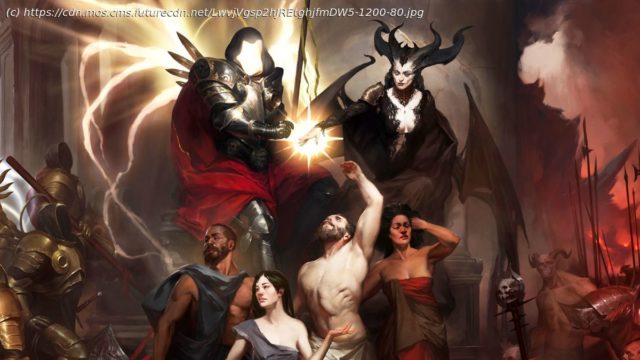A live service action RPG that almost buries everything that makes it great.
Diablo 4 tries to ground us in its dark fantasy world, but that’s an impossible task in a game where you can pull a legendary two-handed axe out of a wolf. The storytelling is as subtle as a Marvel film and about five times as long, and no matter what Diablo 4’s cast of dour characters tell you, you are a superhero born with an empty inventory and the desire to fill it.
The title of Blizzard’s latest action RPG hides what’s really going on: Diablo 4 is a reboot. An unnecessary reboot, but one with a recognizable goal: to reconfigure the series‘ strengths into a modern live service format that fits into the lives of players who probably have a handful of other games to play. Once you finish its campaign, its glorious depth reveals itself, but the overwhelming grind restrains the creativity in its intricate RPG systems.
Today’s prevailing live service structure, exemplified by Destiny 2, might seem to be a good fit for Diablo’s historically replayable co-op design, but it actually requires a huge structural shift. Diablo 4 begins like a story-driven adventure, but it’s not until you finish the campaign that its best parts start to unfold. Entire features, like the MMO-inspired Grim Favors quests or the almost roguelike Helltide events, are held back until you’ve suffered through a 10-hour storyline that tries to reset the over-the-top tone from Diablo 3, but goes overboard with the grimdarkness without fundamentally changing what a Diablo game is about (killing demons).Misery business
Blizzard’s reaction to complaints that Diablo 3 wasn’t „dark“ enough led to something so bleak it’s suffocating. While the campaign focuses on the growing threat of Lilith, the „Mother of Sanctuary“, the side quests offer different flavors of misery. Almost every character you meet does something awful, like betraying their own children, making a pact with demons, or murdering someone over a petty dispute. I’ve helped so many people find their dead family members or have had to kill them that I stopped listening to NPC requests. I was desperate to find joy or hope in all the people I’m supposedly fighting for and routinely found none.
The thematic „return to darkness“, or return to Diablo 2, that Diablo 4 promises only works when that horror meaningfully affects how you play. One early dungeon set in a monastery had me chasing after a lead on Lilith. I expected demons and dead monks but what I found were eerily empty hallways. In the distance I heard doors slam shut and screaming. Instead of yet another dungeon where you fight through nameless enemies to find your target at the end, I was stalking a murderer just out of my reach. The urgency with nothing but the sound of my footsteps echoing through the halls made for one of Diablo 4’s most chilling sequences.
That sort of upending of expectations is rare to find in Diablo 4’s quests, though. Much of it is held back for the endgame in features like Helltide events, which blanket a portion of the map in blood (literally) and supercharges all the demons there. You get one hour to kill as many as you can to collect their Aberrant Cinder drops and open as many rare item chests as you can. Dipping into these events solo puts you at risk of dying and losing half of your Cinders, but grouping up can drastically reduce the challenge. Helltides are the single best argument for Diablo 4’s semi-MMO features, adding thrilling urgency and risk to Diablo’s normally comfortable combat (even if the rewards aren’t that different from running a dungeon). The pushback forces you to see encounters not as a stairway to your next level, but as a puzzle to survive. Every class a painting
The six-act campaign sends you around Estuar trying to stop Lilith from opening a portal to Hell. A few boss encounters, like a surprise fight with one of Diablo’s signature lesser evils in the middle of a sandstorm, stand out because of their significance to the story. Several of these fights are undercut by forgettable MMO-like mechanics that force you to dodge out of highlighted shapes on the ground until you win. It’s not until way after the campaign that you encounter bosses that pose enough of a threat to require a strong understanding of your class to defeat.






